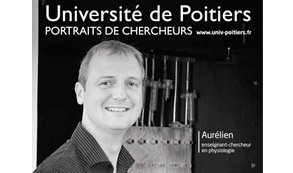Que recherchez-vous ?
Un contenu sur ce site
Une personne sur l'annuaire
Une formation sur le catalogue
Un contenu sur ce site
Une personne sur l'annuaire
Une formation sur le catalogue
Electrophysiologie tissulaire, cellulaire et moléculaire de l’organe coeur.

The myocardium is a highly organized complex organ composed of different tissues within which various cell type exists. Besides the contractile cardiomyocytes, other important non-myocyte populations include endothelial cells, fibroblasts, vascular smooth muscle cells, neuronal cells, stem cells and immune cells. To date, most of the studies, including ours, investigating cardiac ionic channels physiology and physiopathology were focused in the in vitro characterization of isolated cardiomyocytes, fibroblasts or cardiac resident stem cells electrophysiology (1–4). All these studies mainly focused on the individual characteristics of these cell types.
Based on our expertise, we recently developed the investigation of ionic channels function and regulation within a fourth cardiac cell type; intracardiac neurons. The heart is under the control of several regulations within which cardiac innervation plays a central role. The final common pathway for cardiac neuronal control resides in the intrinsic cardiac nervous system which includes several types of neurons with various neurochemical phenotypes (5,6). As a consequence, intracardiac neurons (ICN) represents an important cardiac cell type controlling the cardiac function but is presently understudied in terms of ionic channels as well as in terms of cellular and chemical interactions with other cardiac cell types. This neuronal cell population together with all other cell types define a complex organization which involves several cellular interfaces. The integrated role of ICN and the crosstalks between cardiac cells types is essential to control global cardiac electrophysiological activity and could therefore be at the origin of numerous rhythm disorders. Understanding these cellular interactions is therefore essential for the development of new therapeutic strategies, notably in cardiac arrhythmias
Using advanced technologies (optogenetics, iDISCO) associated to classical approaches (Patch-Clamp, Langendorff system, biochemistry), our objectives are to improve our understanding of intracardiac neuronal system and its role in regulating cardiac function through (i) the identification of specific neuronal populations and mapping of intracardiac neuronal circuits, (ii) the investigation of the electrophysiology of these neurons and (iii) the crosstalk between intracardiac neurons and other cardiac cell types such as fibroblasts/cardiomyocytes.
To a physiopathological point of view, cardiac neural networks may also be altered by structural reorganization or plastic changes during the development of different pathologies and have recently been proposed to contribute to cardiac arrhythmias such as Brugada Syndrome or atrial fibrillation (7,8). The investigation of ICN structural and electrophysiological remodeling in pathological conditions can therefore yield a new approach of cardiac arrhythmias. Based on our investigations in physiological conditions, we will investigate rearrangement of ICN in pathological models that involve autonomic dysfunction and cardiac remodeling such as Duchenne Muscular Dystrophy, amyloidosis or metabolic disorders such as Diabetes (9,10). Finally, cardiac channelopathy investigations have been mainly focused so far on cardiomyocytes ionic channels. The knowledge provided by our research will allow us to identify neuronal ionic channels as potential new therapeutic targets. The alteration of the interaction between ICN and other cellular components of cardiac tissue such as fibroblast/cardiomyocytes cross talks will also constitute a line of enquiry to address these pathologies.
This project is supported by the “Fondation pour la Recherche Médicale” (FRM).